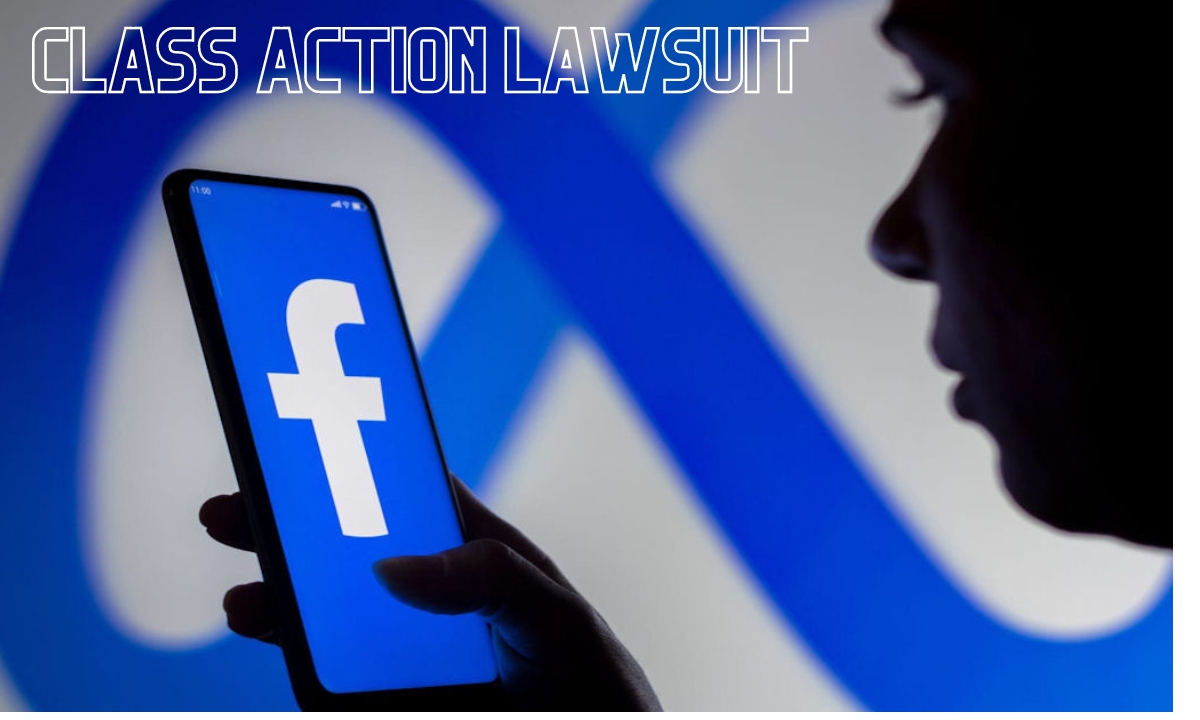Technology
Unraveling the Facebook Class Action Lawsuit: Your Definitive Handbook

Introduction Facebook Class Action Lawsuit:
Are nocturnal anxieties about your Facebook privacy gnawing at your consciousness? You’re not solitary in your unease. Amidst intensifying public scrutiny, a class action lawsuit has been hurled at the colossal social media entity, alleging grave transgressions concerning user data and privacy rights. This legal duel is convulsing the bedrock of one of the globe’s most influential tech entities, rendering it imperative for users like yourself to remain abreast and take decisive action.
In this consummate guide to the Facebook class action legal saga, we shall plunge into the accusations leveled against Facebook, scrutinize the temporal unfolding of this controversy, and dissect its ramifications for users and their cherished personal data. We shall also illuminate the response of governmental bodies to these allegations and contemplate the plausible denouements or settlements that may be on the horizon.
Whether you are an impassioned denizen of social media or merely harbor apprehensions about your online sanctum, comprehending this seminal case is imperative. Join us as we traverse the serpentine twists and turns of this high-stakes legal skirmish that holds the potential to reshape our interaction with technology indelibly.
Scrutiny of the Accusations Directed at Facebook
The Social Media Behemoth, Facebook, a ubiquitous presence in our quotidian existence, finds itself besieged by a volley of accusations in recent epochs. These charges have stoked apprehensions about user privacy and data fortification on the platform.
A pivotal indictment revolves around Facebook’s mishandling of user data. Allegations posit that Facebook inadequately shielded users’ personal information, permitting third-party applications to ingress and exploit this data sans proper acquiescence.
Moreover, there are allegations of Facebook’s indulgence in anti-competitive stratagems by assimilating potential rivals like Instagram and WhatsApp. This purportedly suppressed competition and constricted consumer alternatives within the social media domain.
An additional facet centers on the dissemination of disinformation and spurious news on Facebook’s platform. Critics contend that Facebook failed to take decisive measures to counteract false information, ushering in detrimental repercussions for society.
Furthermore, reservations have surfaced concerning the practices of targeted advertising on Facebook. It is posited that user data was employed to craft highly personalized advertisements sans explicit consent or cognizance.
In response to these indictments, legal actions have been instigated against Facebook by diverse factions and individuals striving for accountability regarding these alleged transgressions. The upshot of these legal skirmishes will cast a mold for how enterprises approach user privacy in the days to come.
It is incumbent upon users to apprehend their entitlements when navigating social media platforms like Facebook. Safeguarding one’s online sanctity may encompass periodic scrutiny of app authorizations, circumspection in divulging personal information, and meticulous calibration of privacy parameters on user accounts.
It remains pivotal for entities such as Facebook to prioritize the shield of user privacy while simultaneously fostering a transparent milieu conducive to the blossoming of trust between them and their user base.
Chronology of Occurrences Leading to the Litigation
The Facebook Class Action Legal Conundrum did not precipitate abruptly; it germinated through a sequence of disquieting incidents that aroused perturbation and prompted investigations. A meticulous examination of the chronology paving the way to this legal imbroglio unfolds as follows:
- 2004: Genesis of Facebook – Mark Zuckerberg bequeaths life to the social networking platform in his Harvard dormitory, initially tailored for college scholars.
- 2010: Privacy Apprehensions Surface – Reports unveil Facebook’s privacy protocols and its stewardship of user data, instigating queries about transparency and concurrence.
- 2014: The Cambridge Analytica Quandary – The political consulting entity illicitly accesses the personal data of millions of Facebook users, kindling global consternation.
- 2018: GDPR Enactment – The General Data Protection Regulation takes effect in Europe, imposing stringent norms on companies handling user data and endowing individuals with heightened command over their information.
- March 2018: #DeleteFacebook Uprising – The hashtag surges on social media as users articulate discontent with Facebook’s privacy methodologies by effacing their accounts.
- July 2020: FTC Imposes $5 Billion Fine on Facebook – In a landmark penalty levied on a tech entity, the Federal Trade Commission penalizes Facebook for privacy breaches linked to the Cambridge Analytica imbroglio and other infringements.
- December 2020: Antitrust Legal Actions Initiated – The Federal Trade Commission (FTC), in concert with various state attorneys general, initiates antitrust lawsuits against Facebook, accusing it of anti-competitive conduct and seeking remedies to address concerns of market dominance.
These pivotal junctures act as lodestones, underscoring escalating public disquietude regarding privacy protocols on social media platforms like Facebook. The trajectory leads us to the present juncture – grappling with a class action lawsuit clamoring for accountability from one of the globe’s foremost technology entities.
Ramifications on Users and their Data Fortification
The Facebook class action lawsuit has kindled substantial anxieties regarding its repercussions on users and the fortification of their data. With accusations of unsanctioned access to user information, the potential repercussions are expansive.
A sentiment of betrayal permeates users who reposed trust in Facebook with their personal data. The erosion of trust can exert enduring effects on how individuals perceive social media platforms and their proclivity to share personal information online.
Compromised data fortification can engender diverse forms of maltreatment. From pinpointed advertising to identity pilferage or even manipulation of political sentiments, users may find themselves vulnerable in unforeseen ways.
Furthermore, this lawsuit has spotlighted the exigency for more rigorous regulations governing data protection. It serves as a clarion call for both users and regulators alike that more stringent measures need to be instituted to shield personal information.
Moreover, individuals may grapple with anxiety and stress cognizant that their private particulars could potentially be misappropriated by third parties sans consent. This not only impacts one’s sense of security but also raises inquiries about our digital entitlements in an increasingly interconnected global milieu.
The repercussions on users’ data fortification cannot be trivialized. It underscores the imperativeness of holding companies accountable for fortifying user information while prompting individuals to adopt a proactive stance in shielding their online presence.
The Role of Government and Regulatory Authorities
Governmental and regulatory bodies assume a pivotal role in supervising the operations of entities like Facebook, guaranteeing compliance with laws and regulations regarding data privacy. In the context of the Facebook class action lawsuit, these bodies have been meticulously monitoring the scenario to discern any potential transgressions.
A principal actor in this milieu is the Federal Trade Commission (FTC), wielding jurisdiction over consumer protection affairs. The FTC has taken strides against Facebook in the past for purported infringements of user privacy. They are currently scrutinizing whether Facebook breached a prior settlement agreement tied to their management of user data.
Additionally, legislators on Capitol Hill have expressed a keen interest in holding Facebook accountable for its actions. Congressional hearings have unfolded wherein lawmakers interrogated company executives about their data methodologies and advocated for augmented regulation to preserve users’ online privacy.
Another pivotal regulatory entity is the General Data Protection Regulation (GDPR) of the European Union. This comprehensive legislation aspires to fortify individuals’ prerogatives over their personal data and holds companies accountable for any mishandling or misuse. If Facebook is found culpable of breaching GDPR, it could face substantial penalties.
Governmental and regulatory bodies emerge as linchpins in addressing concerns articulated by users affected by the alleged infractions at Facebook. Their investigations serve to illuminate potential improprieties, ensure transparency, and labor toward upholding data privacy entitlements for all users of social media platforms.
Prospects and Resolutions in the Facebook Class Action Litigation
The prospective outcomes and resolutions in the Facebook class action lawsuit remain nebulous, given the extant legal processes. However, several conceivable scenarios could emanate from this legal crucible.
One plausible scenario is Facebook opting for an extrajudicial settlement. This could involve consenting to a financial settlement with the claimants and instituting alterations to their data privacy protocols. Settlements often prove advantageous for both litigants, sidestepping protracted and costly legal imbroglios.
Another plausible trajectory is a courtroom trial, where a judge or jury will adjudge whether Facebook transgressed any statutes or regulations. If found culpable, Facebook might confront considerable monetary penalties and be compelled to implement substantive changes to its operational methodologies.
Furthermore, regulatory agencies like the Federal Trade Commission (FTC) may also undertake actions against Facebook based on the allegations presented in the lawsuit. These agencies wield enforcement powers that could result in fines or alternative punitive measures for companies found culpable of engaging in deceptive or unjust practices.
Predicting the exact trajectory of this lawsuit and the specific outcomes it might engender remains challenging. The denouement of this case carries far-reaching implications, not solely for Facebook but for other tech juggernauts wrestling with akin anxieties concerning data privacy and user concurrence.
Guidance for Users: Ingress or Egress from the Litigation
- Comprehend your Options: As a denizen of Facebook, it is imperative to edify yourself on the lawsuit and its ramifications. Devote time to peruse reliable sources of information to assimilate the intricacies and potential impact on your data privacy.
- Appraise your Eligibility: Ascertain if you meet the criteria stipulated for membership in the class action lawsuit, such as residency, age, and duration of Facebook usage. This insight will facilitate a judicious decision on whether participation is judicious.
- Solicit Legal Counsel: If there is a conviction that your rights have been violated by Facebook and the inclination is to participate in the class action lawsuit, contemplate seeking counsel from a proficient attorney specializing in consumer protection or privacy law.
- Balance the Pros and Cons: Weigh the merits and demerits before reaching a decision. Scrutinize potential advantages or drawbacks linked to involvement or abstention from the lawsuit, encompassing considerations like potential compensation versus time commitment and inherent risks.
- Abide by Official Instructions: Stay abreast of any procedural developments concerning opt-out protocols disseminated by accredited legal representatives overseeing this case. It is paramount to adhere scrupulously to all stipulated steps within designated time frames should the decision be to join or exclude oneself from participation.
Remember, the circumstances of each individual are distinctive; ergo, it is indispensable to make an informed decision rooted in one’s specific situation and priorities.
Prescriptions for Safeguarding Privacy on Social Media Platforms
- Scrutinize Privacy Configurations: Invest time in navigating through the privacy settings of your social media accounts, ensuring a lucid comprehension of the information shared publicly and the entities with access. Tailor these settings commensurate with your comfort thresholds.
- Exercise Caution in Information Sharing: Ponder twice prior to disseminating personal details, such as phone numbers or addresses, on social media platforms. Retain cognizance that once ensconced online, eradication might prove intricate.
- Employ Robust and Singular Passcodes: Refrain from adopting easily fathomable passwords for your social media accounts. Opt for an amalgamation of alphabets, numerals, and special characters to augment security.
- Activate Dual-Factor Authentication: Many social media platforms afford the option of fortifying security through dual-factor authentication (2FA). This necessitates users to furnish supplementary verification alongside their password during login.
- Restrict Third-Party App Entitlements: Exercise prudence when authorizing permissions to third-party apps seeking access to your social media accounts. Contemplate periodic reviews and rescissions of access.
- Regularly Update Applications and Devices: Keep all applications and devices abreast with the latest software versions, encompassing pivotal security patches that fortify defenses against vulnerabilities.
- Stay Wary of Phishing Endeavors: Exercise circumspection in the face of suspicious links or messages received via email or within social media platforms. Ascertain the provenance prior to clicking links or divulging personal details.
- Fortify Against Phishing Attempts: Exercise caution when encountering suspicious links or messages in emails or social media platforms. Always verify the source before clicking links or providing personal information.
- Exercise Discernment with Friend Requests/Followers: Exercise prudence in accepting friend requests only from individuals with personal acquaintances or professional trust.
- Prudence in Travel Revelations: Refrain from broadcasting real-time travel plans; instead, share updates post-return.
- Ponder Before Engaging in Quizzes/Surveys: Scrutinize the fine print and evaluate potential risks before participating in quizzes or surveys soliciting personal information.
- YOU MAY ALSO LIKE
- How to Remove Counter.wmail-service.com Virus Steps
Conclusion: The Imperative of Enforcing Corporate Accountability
As we plumb the depths of the Facebook class action legal saga, it becomes manifest that compelling corporations to answer for their actions is pivotal in the contemporary digital era. This case functions as a stark reminder that even behemoths like Facebook must be held to exacting standards in safeguarding user privacy and data.

Through the avenue of legal recourse against Facebook, users are dispatching a potent missive – that their personal data ought not to be commodified without their explicit consent for profit. It underscores the urgency for transparency and more stringent regulations in the domain of social media platforms.
Moreover, this lawsuit accentuates the responsibility corporations bear towards their user base. As awareness burgeons regarding the utilization and potential misuse of data, users clamor for increased command over their online presence. This can only be realized if businesses prioritize user privacy and actively strive towards reinforcing security measures.
The repercussions of this case reverberate beyond the confines of one enterprise. It establishes a precedent for other tech titans to reassess their practices and guarantee that user data is handled with reverence and integrity.
Technology
Improving Handgun Performance: A Guide to Slide Customization

Slide cuts refer to precise alterations to the handgun’s exterior, strategically executed to confer specific benefits, whether performance-related or aesthetic. This process involves systematically removing material from the slide to achieve desired traits. Slide cuts can vary from a minimalist surface modification to intricate designs, each serving distinct purposes. On a functional level, they significantly lighten the firearm, enhance grip for better slide manipulation, and improve heat dissipation during extended firing periods. The choice of slide cuts extends beyond mere preference, allowing users to align modifications with the individual shooter’s practical needs and stylistic aspirations.
Introduction to Handgun Customization
In the contemporary realm of firearms, customization transcends being a mere trend, evolving into an essential practice among handgun aficionados. Historically, firearms buyers received their purchase in a static condition, but modern firearm users pursue enhancements to augment operational performance and reflect their style. This evolution represents a broader historical trajectory where personalization plays a pivotal role in the function and aesthetics of firearms. Among the options available, slide customization, mainly through slide milling, has emerged as a vital component of this trend, bringing substantial improvements in accuracy, handling, and functional aesthetics.
Critical Benefits of Slide Customization
Customizing handgun slides offers myriad advantages; chief among them is performance enhancement. Precise slide cuts can drastically improve the dynamics of firearm handling by decreasing its mass, which fosters quicker follow-up shots, thereby improving shooting efficiency. Beyond performance optimization, slide customization significantly boosts the aesthetic appeal of firearms. Many users embrace customization for the opportunity to create a firearm aesthetic that embodies their style, setting their weapon apart visually and functionally. Furthermore, regarding operational efficacy, slide modifications contribute to enhanced recoil management, allowing shooters to enjoy better control and heightened accuracy, which is particularly beneficial in dynamic shooting contexts.
Popular Customization Options
Among avid firearm owners, several slide customization options consistently emerge as favorites. These include porting, which involves adding small holes or slots on the slide to allow gas release that diminishes recoil, thus enhancing control and stability during shooting. Conversely, serrations provide additional grip for faster slide manipulation, which can be critical in rapid-paced scenarios. Window cuts present another popular option, offering the practical benefit of weight reduction and a stylistic appeal by revealing the firearm’s internal mechanisms. Each modification type presents distinct advantages and potential drawbacks; therefore, firearm enthusiasts must carefully assess which options align best with their shooting needs and intentions.
How to Choose the Right Modifications
Deciding on suitable slide modifications requires thoughtful deliberation. Considerations should include the firearm’s intended purpose, the user’s personal style preferences, and the shooter’s experience level. While one modification might enhance one user’s performance, another shooter might not find it advantageous. Engaging with seasoned firearm experts can offer invaluable perspectives and help avoid common pitfalls associated with customization. These experts can provide personalized advice on tailoring enhancements, ensuring modifications contribute positively to the firearm’s performance and safety.
Installation and Maintenance Tips
The correct installation of slide modifications is imperative to ensure safety and enhance the firearm’s operational lifespan. Given the complexity of this process, specialized tools and techniques are often required, making professional assistance highly recommended for those lacking expertise. After customization, consistent maintenance becomes crucial to safeguard the firearm against wear and degradation. Routine cleaning and inspections should be integrated into the firearm’s maintenance regimen. Adhering to maintenance practices not only preserves the firearm’s integrity but also guarantees its continued reliability and performance.
Safety Considerations
Safety is paramount in any firearm modification undertaking. Incorrect installation processes may translate to operational hazards, compromising user safety and firearm efficacy. Moreover, legal compliance is critical—modifications must stay within the bounds of existing federal and local regulations to preclude legal repercussions. Before any alterations, owners should verify that modifications do not violate legal parameters, thus ensuring their customized firearm’s safety and legality.
Expert Opinions and Insights
Diverse opinions from firearms experts underscore the advantages of slide customization, although they advise care and caution. While these modifications can significantly enhance the handling and efficiency of the handgun, they are best performed by knowledgeable professionals or experienced individuals. Insights from real-life cases attest to the transformative effects of custom slides, where tailored modifications improve shooting comfort and effectiveness tailored to the shooter’s distinct preferences and functional needs.
Technology
Mastering B2B SEO: Strategies for Optimal Online Visibility

Introduction to B2B SEO
Optimizing for business-to-business (B2B) transactions requires a refined approach beyond traditional SEO techniques in the intricate digital marketing ecosystem. Businesses aim to increase their visibility on a search engine and enhance the quality of interactions with other businesses that might be seeking their solutions. Here, SEO for B2B companies emerges as a pivotal strategy. Unlike B2C SEO, where consumer behavior drives the search intent, B2B SEO focuses on crafting a narrative that resonates with professional buyers searching for comprehensive solutions, high-quality products, and valuable partnerships.
The changing dynamics of B2B SEO means businesses must stay engaged with evolving trends. It involves constant learning, adapting to search engine algorithm updates, and leveraging data to refine strategies. It’s not only important to show up in search results; it’s crucial to ensure that all content is optimized to meet business partners’ needs. Meticulous attention to detail, backed by industry insights, can differentiate between being another option and being a preferred business collaborator.
Understanding Your Target Audience
Deciphering your target audience is the cornerstone of an effective B2B SEO strategy. Businesses focus on solving specific challenges; therefore, understanding these pain points is vital. Recognizing and addressing these needs can enhance engagement and strengthen business relationships. Using data analytics tools to garner insights about buyer personas, purchasing behavior, and engagement patterns can help tailor your content to their needs. This level of comprehension helps businesses design custom experiences, providing solutions that perfectly match. It’s not just about your offering’s features; it’s about how your offerings can integrate into their existing processes to drive efficiency and growth. By aligning SEO strategies with these insights, businesses can successfully capture their audience’s attention and convert it into lasting relationships.
Keyword Research Techniques
Robust keyword research is the foundation of a successful SEO strategy. In B2B SEO, the challenge is identifying keywords that professionals and decision-makers use during their search process. It often means focusing on long-tail keywords and industry-specific jargon that accurately capture the intent of potential business customers. Platforms are invaluable in this endeavor, providing insights into search volumes, competition, and related terms. Effective keyword research not only increases visibility but also ensures relevance. It guides content creation, making sure every piece of content you publish resonates with your audience and answers their specific questions. The goal is to bridge the gap between search queries and your content, delivering information that fits neatly into the search journey of another business. By honing in on the right keywords, you position your company as an expert voice in your industry, potentially leading to higher engagement and conversions.
Crafting Impactful Content
Creating content that genuinely adds value is imperative in a B2B environment. Businesses are searching for expertise, solutions, and actionable insights that they can readily apply in their context. Producing high-quality content such as whitepapers, detailed case studies, and how-to guides can establish your brand as an authority. Not only does this help build trust, but it also encourages returning visitors who value your insights.
Furthermore, the focus should always be on content that educates, informs, and inspires businesses to take actions that align with their objectives. Instead of being overtly promotional, the content should be resourceful, helping companies solve problems or navigate challenges. It enhances your reputation and increases your chances of being shared across business networks, improving visibility and reach organically.
On-Page SEO Best Practices
On-page SEO is critical to search optimization, especially in the competitive B2B sector. It involves optimizing various elements of your webpage, including title tags, meta descriptions, headers, and overall content structure. You can boost your search engine positioning and enhance the user experience by effortlessly integrating your specific keywords into these components. Ensuring that each page caters to the needs of the business audience by presenting information clearly and concisely helps improve organic search performance. Good on-page SEO is a great facilitator, guiding your audience through your content and encouraging further exploration of your offerings. The on-page content must speak directly to potential business partners, addressing their queries and presenting your solutions as the ideal fit.
Technical SEO Essentials
Technical SEO forms the backbone of a well-optimized website, particularly in B2B environments where user experience is pivotal. Key aspects such as site speed, mobile friendliness, and security are important ranking factors and vital for user retention and satisfaction. A technically robust website attracts and retains business clients by providing a seamless browsing experience. A secure, responsive, fast-loading site fosters trust and encourages further engagement. Businesses will appreciate a site where they can quickly access information without hitches, thus increasing the likelihood of conversions. Continuous monitoring and updating of your site’s technical aspects ensure it remains competitive, offering the best possible experience for all visitors.
Utilizing Digital PR and Backlinks
Within the context of SEO on a large scale, digital PR strategies are crucial in establishing a brand’s credibility. By forging relationships with authoritative and industry-relevant sites, you can earn backlinks that significantly enhance your website’s credibility. Publications and reputable sources that align with your business goals can become platforms where you share valuable insights, increasing exposure. Backlinks from high-quality sources signal to search engines that your site is authoritative, enhancing your search engine positioning. Moreover, digital PR efforts help amplify your reach by presenting your brand to potentially untapped markets and networks. The focus should always be on creating and nurturing genuine relationships that add value to both parties.
Monitoring and Measuring SEO Performance
A vital aspect of any successful SEO strategy is ongoing performance measurement. SEO isn’t a one-time effort; it requires continuous refinement based on performance insights. Instruments can assist in monitoring traffic, user engagement, and conversion rates, providing a complete understanding of how your SEO strategies impact business results. Regular analysis lets you determine what’s working and what strategies need tweaking. Keeping up with evolving SEO trends and monitoring SEO performance ensures you remain ahead in the competitive digital landscape. By learning from the data, businesses can make informed decisions that propel them toward achieving their overarching marketing and business goals.
Technology
Types Of Trailers: Finding The Perfect Fit For Your Needs

Utility trailers are the go-to solution for transporting goods that require exposure to the elements. These versatile trailers can handle it all, whether you’re moving yard waste, furniture, or construction materials. They are trendy among homeowners and contractors due to their flexibility and ease of use. Utility trailers are often light, which makes them easy to tow even with smaller vehicles. They are perfect for short-distance moves or frequent use around the house because of their open design, making them easier to load and unload than enclosed trailers. For those interested in new trailer sales, checking offerings from different dealers can help you find the best options nearby to choose the suitable model that fits your needs.
Enclosed Trailers
For those who need to keep their cargo safe from weather, theft, or other potential hazards, enclosed trailers are the best option. These trailers offer complete protection by shielding valuable goods from harsh environmental conditions, such as rain, snow, and strong winds, while also providing a secure, lockable space to deter theft. Whether transporting equipment, vehicles, or personal belongings, enclosed trailers offer peace of mind and ensure everything arrives intact. To find the right trailer that fits your needs, visiting a reputable trailer dealer can help you explore the various sizes, features, and customizations available.
Flatbed Trailers
Flatbed trailers are perfect for transporting oversized items or heavy-duty equipment, making loading and unloading more convenient. They are frequently used in logistics, particularly large-scale operations, to transfer items quickly. Their open design allows for loading from any side, often using forklifts or cranes, making the process quicker and more efficient. This setup saves time and labor costs in high-volume transport operations.
Dump Trailers
Dump trailers with their hydraulic lifts are ideal for landscaping, construction, and farm work, as they significantly facilitate the unloading of bulk materials. This results in decreased manual labor and increased efficiency. Dump trailers are made to withstand harsh conditions and are used in agricultural applications. They come in different sizes and capacities. They streamline operations and are well-equipped to manage substantial loads, making them a sought-after option for contractors and farmers.
Livestock Trailers
Livestock trailers are made expressly to move livestock, including pigs, horses, and cattle. They provide ventilation and specialized flooring for the comfort and safety of the animals. Farmers depend on these trailers to ensure the well-being of their livestock during transportation. Modern trailers have secure partitions, easy-to-clean surfaces, and safety features like padded interiors and slip-resistant floors. These trailers ensure that livestock arrive at their destination in optimal condition, minimizing injury or stress during transport.
Car Trailers
Car trailers are crucial for transporting vehicles, especially for car enthusiasts or dealerships. They are designed to transport cars securely for auctions, shows, or sales. Modern trailers have specialized tie-downs and ramps for safe and efficient loading and unloading. Choosing the right trailer enhances safety and ease of transport, ensuring that cars reach their destination without damage. Some trailers come with enclosed options for added protection.
-

 Technology9 months ago
Technology9 months agoBoosting Customer Engagement Through App Loyalty Programs
-

 Blog10 months ago
Blog10 months agoThe Rich Culinary Heritage of Cassasse: A Delightful Journey into a Cultural Dish
-

 Technology9 months ago
Technology9 months agoWhat is Geöe? All You Need to Know in 2024
-

 Blog10 months ago
Blog10 months agoUnveiling the Delightful World of Pollaste: A Culinary Journey
-

 Technology11 months ago
Technology11 months agoGeekzilla Podcast: A Remarkable Journey into Geek Culture
-

 Blog8 months ago
Blog8 months agoUnveiling the History of Buší: A Traditional Delicious Dish
-

 Blog10 months ago
Blog10 months agoMaterialistic Princess Spoilers Complete Story 2024
-

 General10 months ago
General10 months agoUnveiling the Marvels of Chagaras: Palm Grasshoppers





















